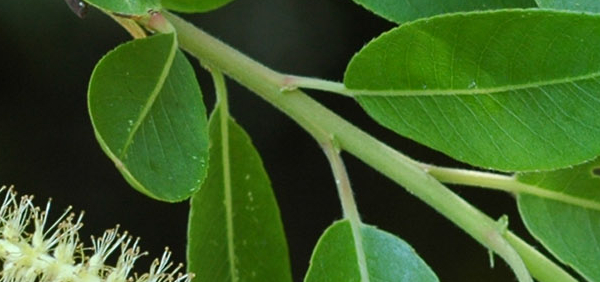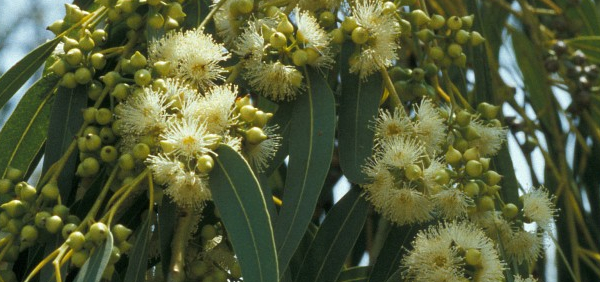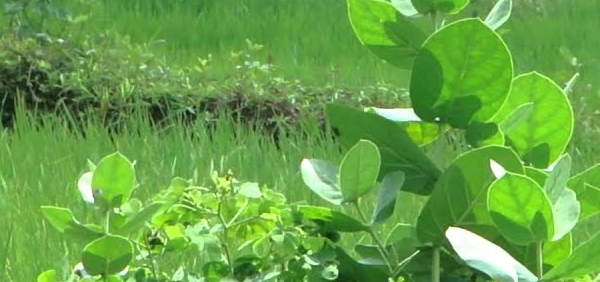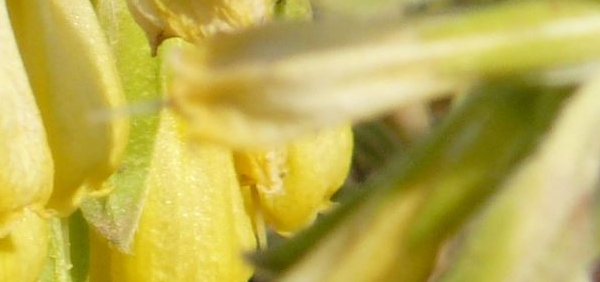bendarli (Tam.) :

Morphology:
The plant has creeping stem with erect tips.
Stems are dichotomously branched, one of the branches remains small and the other grows to a greater length.
Smaller and erect branches bear cone or strobili at the tips containing spores.
The old main axis or the rhizome remains completely or partially subterranean.
Stems are densely covered with small moss like leaves that are spirally arranged and 4.0-6.0 mm long.
Leaves are simple, sessile, with serrate margins, pointed tip and single median vein.
Leaves are also called microphylls.
Fertile or strobilus bearing branches bear scale like yellowish green leaves while the sterile branches bear linear green leaves.
Basal surface of creeping stems bear dichotomously branched and thin adventitious roots abounds all along its length.
Floral Characteristics
This plant belongs to a lower group under phylum Pteridophyta and does not bear flowers.
It has two phases in the life cycle i.e. sporophytic and gametophytic phases.
The plant bearing strobilus is the sporophytic phase of the life cycle. Strobilus bears spirally arranged sporophylls with sporangium which produces numerous spores.
The spores come out from the sporangium and germinate in the soil to form a small top shaped prothallus.
This is the gametophytic phase of the life cycle
Histology:
Strobilus:
These are distinct, yellowish to cream in color when mature, 2.5-5.0 cm long, compact and are borne at the tips of special erect shoots.
The sporophylls possess a small flange on ventral side. It protects the sporangium.
Sporangium arises on the dorsal (adaxial) surface of the sporophylls (foliar or epiphyllous condition). Sporangia are yellowish orange in colour and about 2.0 mm long.
When spores become mature, central axis of strobili elongates.
As a result the sporophylls spread out exposing the sporangia.
The exposed sporangia become dry. Later on sporangial wall splits and disseminate the spores.
Spores:
These are light yellow in color, homosporous, unicellular with single nucleus, filled with oil and fat, 0.03 mm in diameter, tetrahedral in shape with a rounded or semicircular base, spores posses triradiate ridges and reticulate ornamentation on the surface.
Germination of Spores:
Spores take about 3-8 years to germinate. They germinate under moist conditions to form prothallus with the help of specific endophytic fungus.
In the absence of this fungus, prothallus does not develop and die.
Prothallus:
It is top shaped, tuberous, yellowish brown in colour and about 15 mm long.
It has two distinct zones (i) lower conical region bearing numerous rhizoides and (ii) upper broad generative region several archegonia on the margins and antheridia on the center.
Antheridia produce biflagellate spermatozoites, which in presence of water droplets, swim and reach the archegonial neck.
Only one spermatozoid reaches the egg and effect fertilization forming oospore.
Oospore is converted into embryo by cell division which later becomes young plant.
This development is very slow and the young plant (sporophyte) depends for years together on the subterranean prothallus (gametophyte) for nutrition.
It takes many years to come above ground and become independent.
- » Classification and names of bendarli (Tam.)
- » Synonyms and definitions of bendarli (Tam.)
- » Drug Properties of bendarli (Tam.)
- » Chemical Constituents of bendarli (Tam.)
- » Standardization of bendarli (Tam.)
- » Parts used and Dosage of bendarli (Tam.)
- » Morphology and Histology of bendarli (Tam.)
- » Distribution and Conservation of bendarli (Tam.)
- » Cultivation of bendarli (Tam.)
- » bendarli (Tam.) in the market
- » Medicinal Uses of bendarli (Tam.)
- » Researches and clinical trails of bendarli (Tam.)
- » bendarli (Tam.) in other sytems of medicine
- » Ayurvedic formulations with bendarli (Tam.)
- » Images of bendarli (Tam.)













